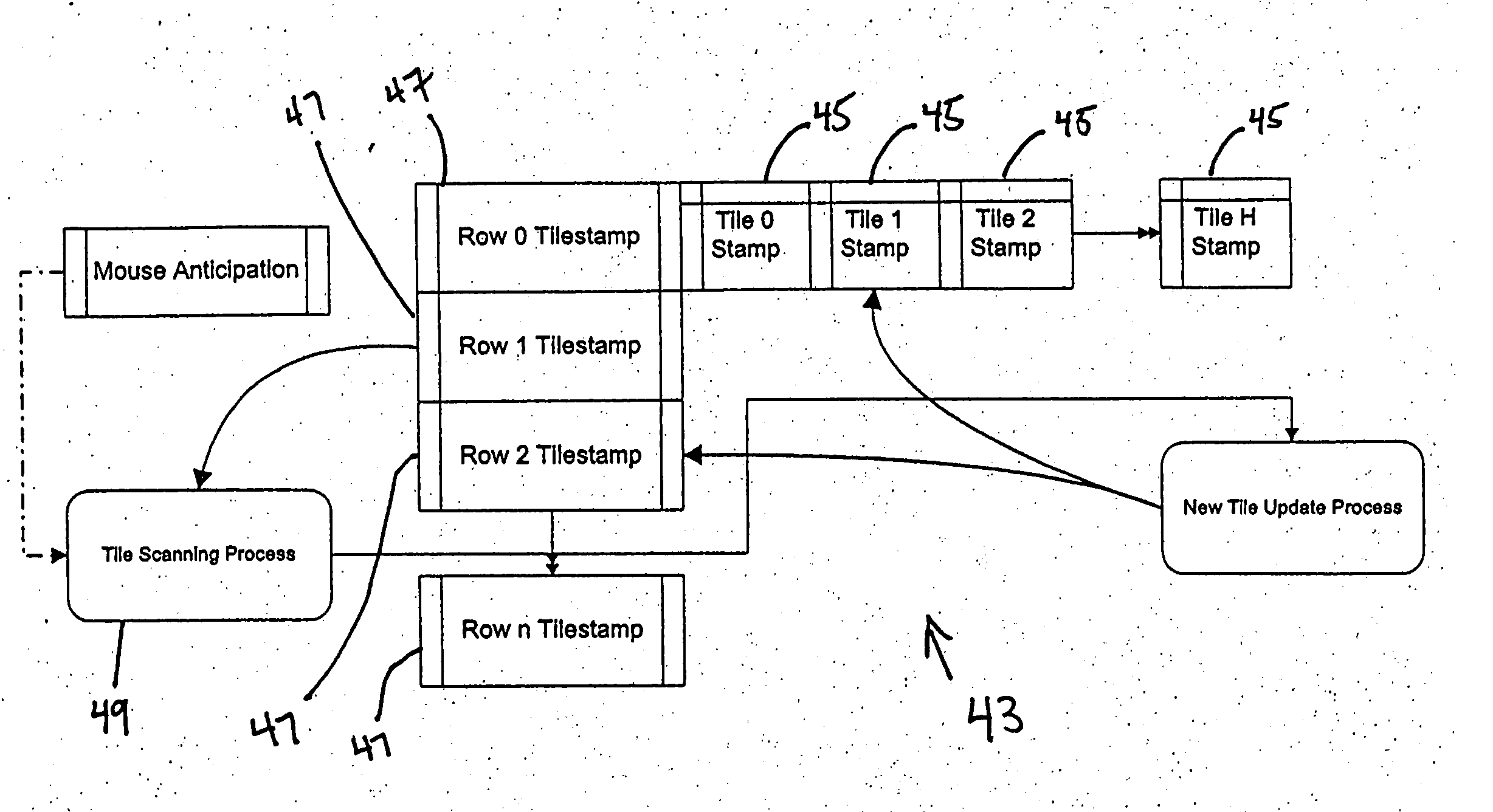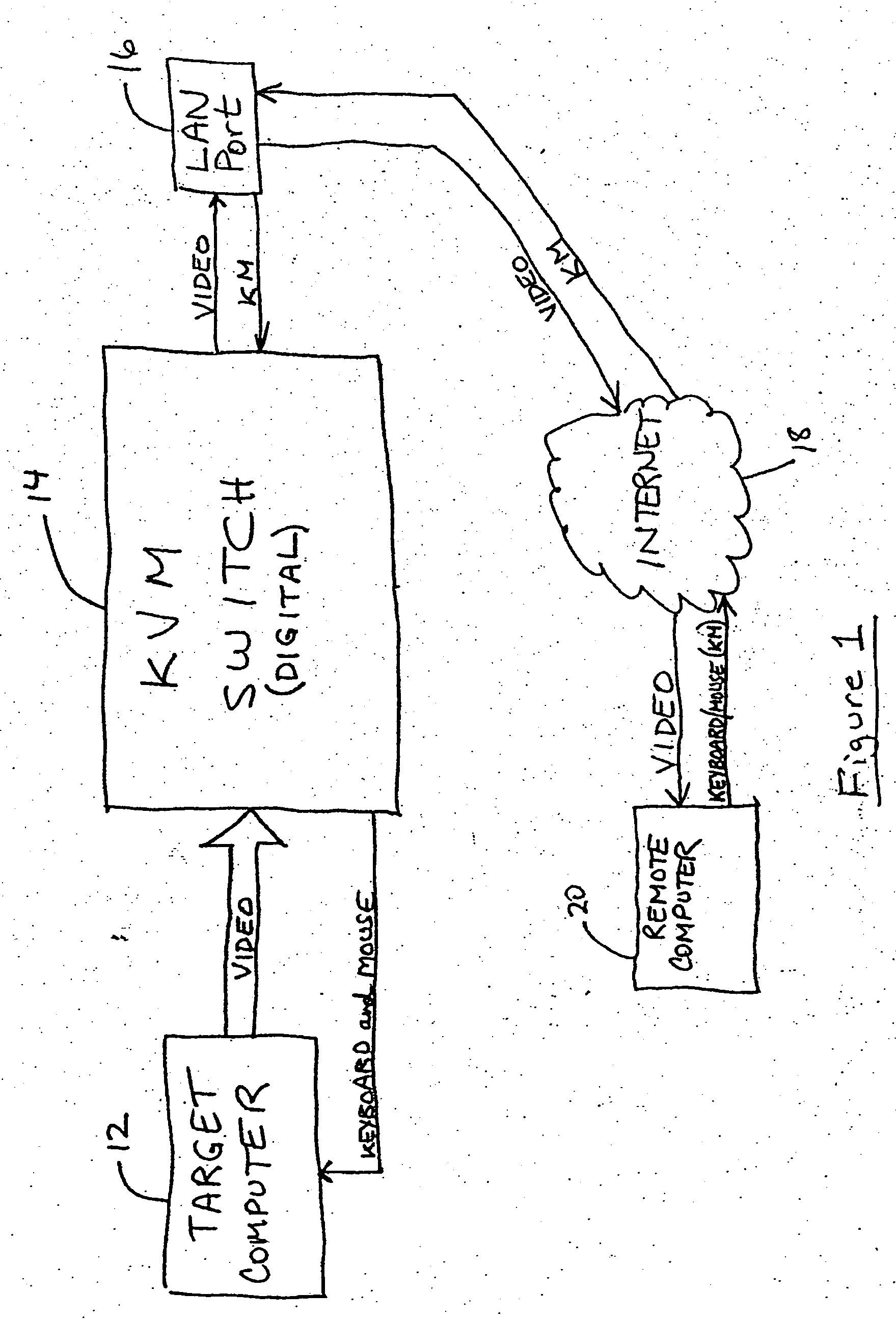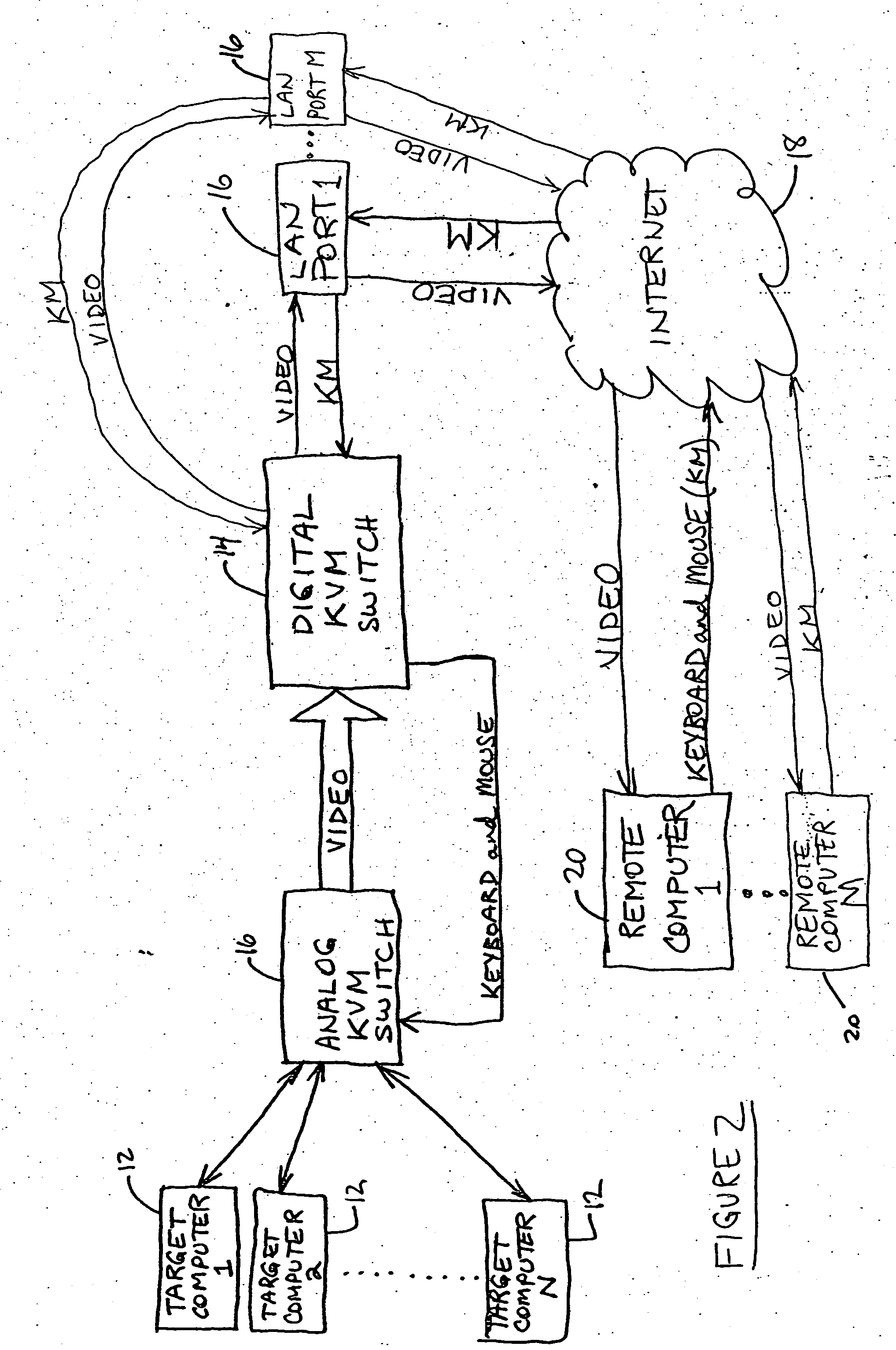Method and apparatus for facilitating control of a target computer by a remote computer
a remote computer and target computer technology, applied in the field of computer network maintenance, can solve the problems of inability to direct use of servers by maintenance personnel, large computer network, and inability to maintain and control such networks, and achieve the effects of reducing bandwidth usage, improving usability and perceived performance, and increasing processing speed
- Summary
- Abstract
- Description
- Claims
- Application Information
AI Technical Summary
Benefits of technology
Problems solved by technology
Method used
Image
Examples
Embodiment Construction
[0076] Referring now to FIG. 1, a target computer 12 is shown. In the embodiment shown in FIG. 1, KVM switch 14 is connected directly to target computer 12, and receives the video signals of target computer 12. In the embodiment shown in FIG. 2, N target computers 12 (N>1) are connected through an analog KVM switch 16 to the digital KVM switch 14. In this way, users of one of M (M>1) remote computers 20, as will be more particularly described below, can receive the video signals of any one of N target computers 12, and control those target computers 12 by the keyboard and mouse signals being transmitted thereto. The user of a remote computer 20 can choose which target computer 12 is controlled by switching the analog KVM switch 16.
[0077] The KVM switch 14 is connected, preferably via a LAN port 16, to the internet, designated by reference numeral 18. The remote computer 20 receives information from the KVM switch 14 via the internet 18. It will be appreciated that the connection be...
PUM
 Login to View More
Login to View More Abstract
Description
Claims
Application Information
 Login to View More
Login to View More - R&D
- Intellectual Property
- Life Sciences
- Materials
- Tech Scout
- Unparalleled Data Quality
- Higher Quality Content
- 60% Fewer Hallucinations
Browse by: Latest US Patents, China's latest patents, Technical Efficacy Thesaurus, Application Domain, Technology Topic, Popular Technical Reports.
© 2025 PatSnap. All rights reserved.Legal|Privacy policy|Modern Slavery Act Transparency Statement|Sitemap|About US| Contact US: help@patsnap.com



